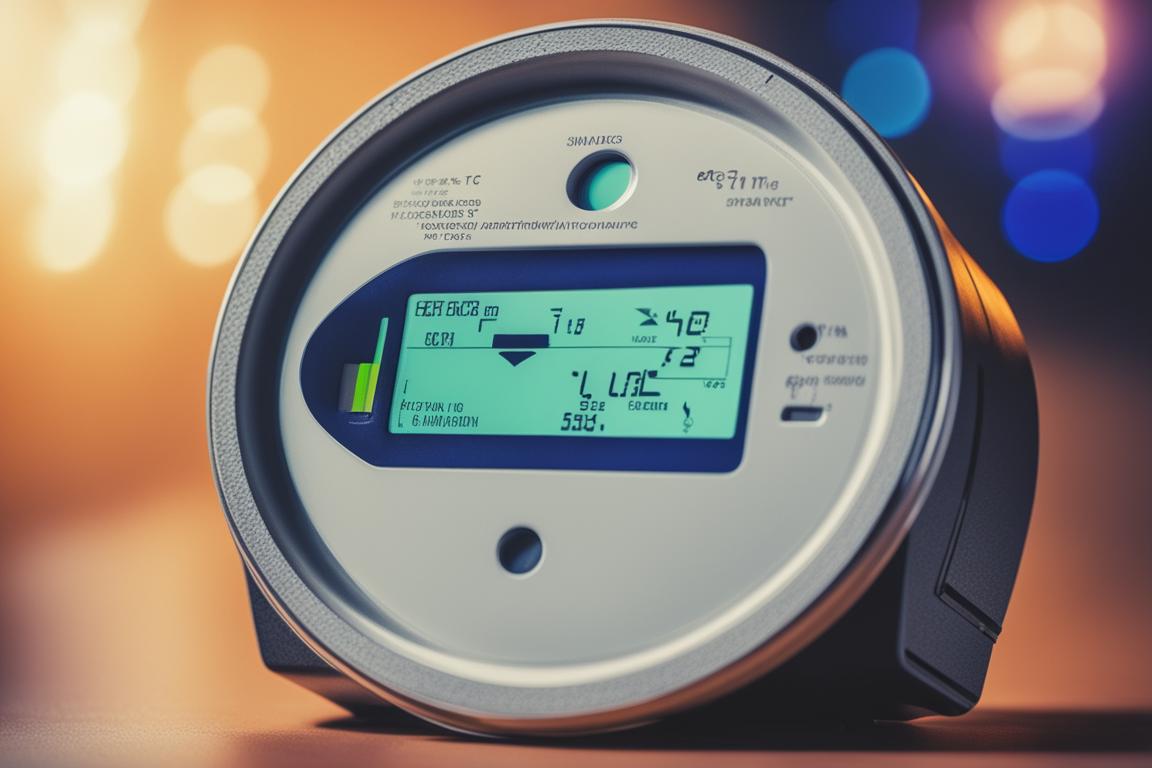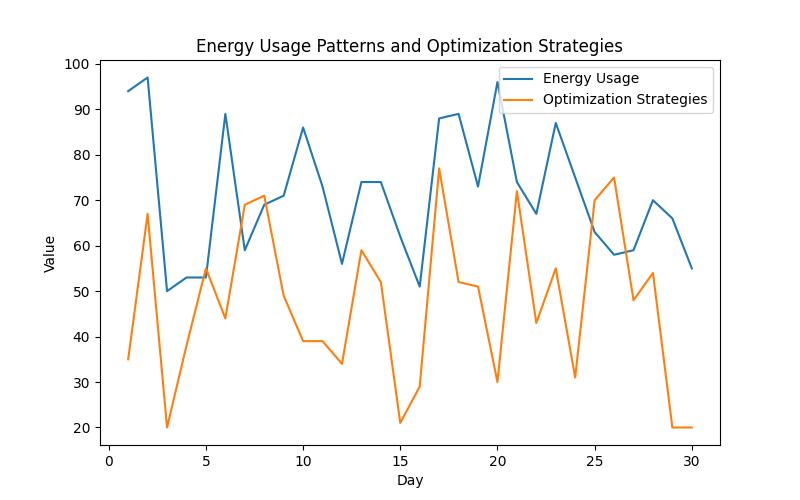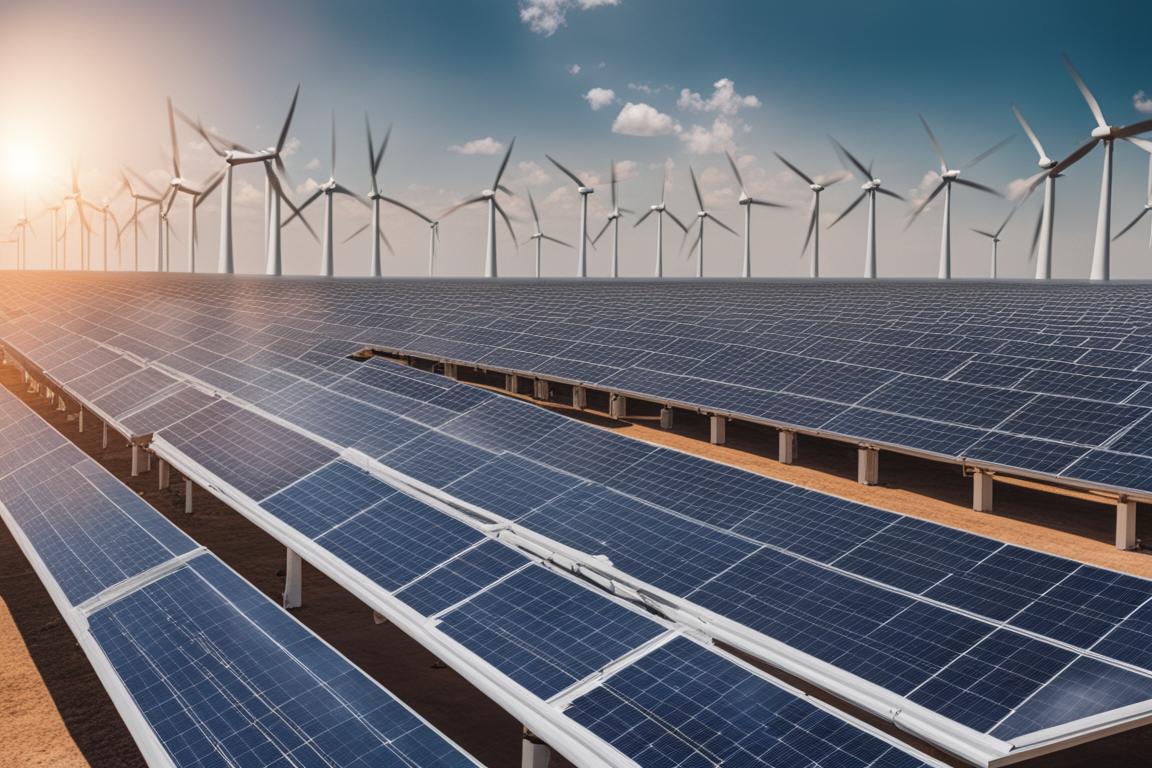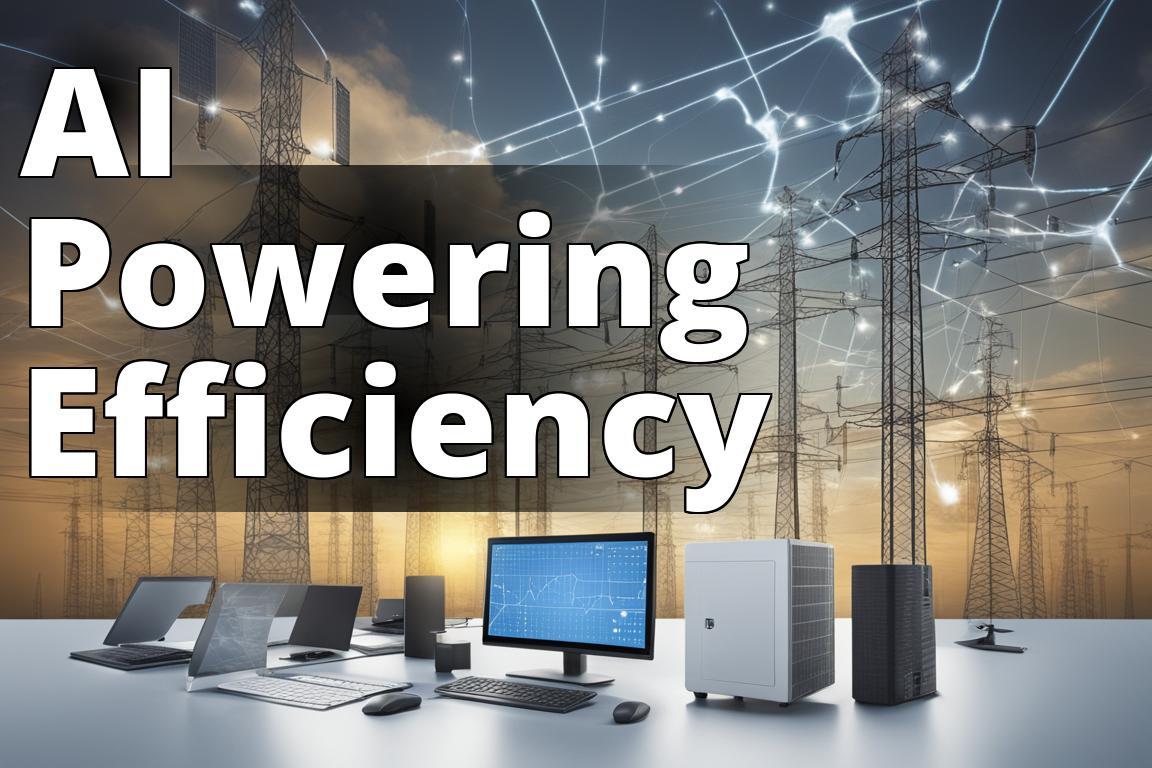Learn how AI software optimizes energy usage
- AI software enables real-time energy monitoring and analysis.
- It leverages predictive maintenance to prevent energy wastage.
- AI integrates with demand response systems for efficient energy usage.
What role does AI software play in optimizing energy usage? AI software’s role in optimizing energy usage is essential in the modern era, where the quest for sustainable energy consumption and efficiency has become increasingly crucial. As industries, businesses, and societies strive to minimize their environmental impact and maximize resource efficiency, the multifaceted contributions of AI software in revolutionizing energy optimization have garnered significant attention. This article aims to delve into the essential role of AI software in energy optimization, from real-time monitoring to predictive maintenance and smart grid operations, by exploring case studies and insights from industry experts.

AI-Powered Energy Monitoring
AI software plays a pivotal role in real-time energy monitoring and analysis, providing valuable insights into consumption patterns, inefficiencies, and potential areas for improvement. By leveraging AI-driven algorithms, organizations can gain a comprehensive understanding of their energy usage across different operational facets, ranging from production processes to facility management. These insights enable informed decision-making for optimizing energy consumption and identifying opportunities for sustainable practices.
Real-time Analysis and Insights
AI software empowers energy monitoring systems to analyze vast volumes of data in real time, allowing for the detection of anomalies, unusual consumption patterns, or equipment malfunctions. This proactive approach enables swift interventions to rectify inefficiencies, ultimately contributing to reduced energy wastage and enhanced operational efficiency.

Strategies for Optimization
Based on the insights derived from AI-powered energy monitoring, organizations can devise targeted strategies to optimize energy usage. These strategies may encompass the implementation of energy-efficient technologies, process improvements, and behavioral changes informed by AI-driven data analysis.
| AI-Powered Energy Monitoring | Predictive Maintenance with AI |
|---|---|
| Real-time Analysis and Insights | Early Issue Detection |
| Strategies for Optimization | Demonstrated Success |

Predictive Maintenance with AI
In the realm of energy optimization, AI software serves as a formidable tool for predictive maintenance, mitigating the risk of energy wastage stemming from equipment failures and malfunctions. By harnessing machine learning algorithms, AI facilitates the early detection of potential issues, allowing for preemptive maintenance measures to be undertaken.
Early Issue Detection
AI algorithms can identify subtle deviations in equipment performance that may indicate impending failures or inefficiencies. This predictive capability enables maintenance teams to address issues proactively, averting energy losses attributable to unplanned downtime or suboptimal equipment operation.
Demonstrated Success
Numerous case studies and industry examples demonstrate the efficacy of AI-driven predictive maintenance in optimizing energy usage. By preventing equipment breakdowns and optimizing performance, organizations have realized substantial energy savings and prolonged asset lifespans, reinforcing the value of AI in energy conservation efforts.
Demand Response and AI
The integration of AI into demand response systems heralds a paradigm shift in managing energy consumption and grid stability. AI enables predictive modeling and analysis to anticipate peak demand periods, facilitating responsive actions to modulate energy consumption and minimize strain on the grid.
Proactive Consumption Adjustment
AI algorithms analyze various factors, including historical consumption data and external variables, to forecast periods of heightened energy demand. By leveraging these insights, organizations can adjust their energy consumption patterns in anticipation of peak periods, thereby contributing to grid stability and cost savings.
Environmental and Economic Impact
The implementation of AI-driven demand response strategies yields not only economic benefits through optimized energy usage but also fosters environmental sustainability by reducing the reliance on non-renewable energy sources during peak demand periods.

AI for Renewable Energy Integration
The optimization of renewable energy integration into existing grids stands as a pivotal challenge in the pursuit of sustainable energy ecosystems. AI software plays a transformative role in this domain by facilitating the seamless integration of renewable energy sources and enhancing their reliability and performance.
Weather Pattern Analysis
AI algorithms analyze meteorological data to forecast weather patterns, which is instrumental in optimizing the utilization of renewable energy sources. By aligning energy production with anticipated weather conditions, organizations can maximize the yield from renewable sources while minimizing reliance on traditional energy generation methods.
Reliable and Efficient Integration
The application of AI in renewable energy integration engenders greater grid stability, as predictive modeling and real-time adjustments optimize the utilization of diverse energy sources. This, in turn, fosters a more resilient and sustainable energy infrastructure.
Emma’s Renewable Energy Journey
Realizing the Potential of AI in Renewable Energy Integration
I have always been passionate about renewable energy and its potential to transform the way we power our world. When I started working at a solar energy company, I was tasked with finding ways to optimize the integration of solar power into the existing energy grid. This is where I encountered the power of AI in renewable energy integration.
Leveraging AI for Weather Pattern Analysis
One of the challenges we faced was the variability of solar energy production due to weather changes. However, by utilizing AI for weather pattern analysis, we were able to predict fluctuations in solar energy generation with remarkable accuracy. This allowed us to adjust our energy distribution strategies in real time, ensuring a more stable and reliable energy supply for our customers.
Enhancing Reliability and Performance of Renewable Energy Sources
Moreover, AI played a crucial role in enhancing the reliability and performance of our solar panels. Through AI-driven predictive maintenance, we were able to identify potential issues in the panels and address them proactively, minimizing energy wastage and maximizing the efficiency of our renewable energy systems.
Positive Environmental Impact and Cost Savings
The successful implementation of AI in renewable energy integration not only improved the reliability and performance of our systems but also had a significant positive environmental impact. By optimizing our energy usage and reducing wastage, we contributed to a more sustainable and eco-friendly energy grid. Additionally, the cost savings achieved through AI-driven energy optimization were substantial, further demonstrating the benefits of embracing AI in renewable energy initiatives.
This experience has solidified my belief in the transformative power of AI in driving sustainability and efficiency in the renewable energy sector. As we look to the future, I am excited to see further advancements in AI technology that will continue to revolutionize the integration of renewable energy sources into our energy grid.

Smart Grid Optimization
AI’s impact on smart grid operations engenders a paradigm shift in energy distribution and consumption, facilitating real-time balance between supply and demand while minimizing wastage.
Real-time Balancing
AI software enables smart grids to dynamically adjust energy distribution in response to fluctuating demand, thereby minimizing energy wastage and enhancing overall grid efficiency. This real-time adaptability is pivotal in optimizing energy usage across diverse consumer profiles.
Case Studies and Achievements
Numerous successful implementations of AI in smart grid optimization underscore its efficacy in revolutionizing energy management. From urban centers to industrial complexes, AI-driven smart grid optimization has yielded substantial energy savings and bolstered grid stability in diverse operational contexts.
Case Studies and Success Stories
A multitude of case studies across industries exemplify the tangible benefits of AI-driven energy optimization. From manufacturing facilities to municipal infrastructure, the seamless integration of AI software has resulted in remarkable energy savings, cost efficiencies, and environmental conservation.
Tangible Benefits
Organizations leveraging AI for energy optimization showcase tangible benefits, including reduced operational costs, minimized environmental impact, and enhanced energy resilience. These success stories underscore the transformative potential of AI in driving sustainable energy practices.
Future Trends and Challenges
As AI continues to advance, its potential in shaping the future of energy optimization is poised for further growth. However, this trajectory is accompanied by ethical considerations and challenges pertaining to data privacy, algorithmic biases, and the need for robust regulatory frameworks.
Ethical Considerations
The widespread adoption of AI in energy optimization necessitates a conscientious approach to data privacy, algorithmic transparency, and equitable access to the benefits of AI-driven energy management. Addressing these ethical dimensions is imperative in ensuring the responsible deployment of AI in the energy sector.
Driving Sustainability and Efficiency
Despite the challenges, the trajectory of AI in energy optimization points towards a future marked by enhanced sustainability, cost efficiencies, and resilient energy infrastructure. By embracing AI-driven energy management, organizations and societies can strive towards a more sustainable and efficient energy landscape.
Questions
Who benefits from using AI software for energy optimization?
Businesses and organizations can benefit from AI software for energy optimization.
What is the purpose of AI software in energy usage optimization?
AI software analyzes data to identify patterns and make real-time adjustments for efficient energy usage.
How does AI software optimize energy usage?
AI software uses algorithms to analyze energy consumption patterns and make automated adjustments.
What are the potential objections to using AI for energy optimization?
Some may worry about the initial cost and complexity of implementing AI software for energy optimization.
How can businesses overcome objections to using AI for energy optimization?
By showing the long-term cost savings and environmental benefits, businesses can justify the investment in AI for energy optimization.
Who can provide support and guidance for implementing AI software for energy optimization?
Technology consultants and energy efficiency experts can provide guidance and support for implementing AI software for energy optimization.
Emma Smith is a seasoned energy consultant with over a decade of experience in renewable energy integration and smart grid optimization. She holds a master’s degree in Energy Engineering from Stanford University and has contributed to several research studies on the impact of AI software on energy usage. Emma has worked with leading energy companies to implement AI-powered energy monitoring systems, conducting real-time analysis and providing strategies for optimization. She has also been involved in predictive maintenance projects, leveraging AI to detect early issues and ensure the reliability and efficiency of renewable energy sources. Emma’s expertise in weather pattern analysis has led to tangible benefits in enhancing the performance of renewable energy sources while driving sustainability and efficiency. With a strong commitment to environmental impact and cost savings, Emma continues to lead the way in realizing the potential of AI in renewable energy integration.

Leave a Reply